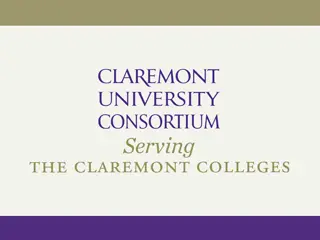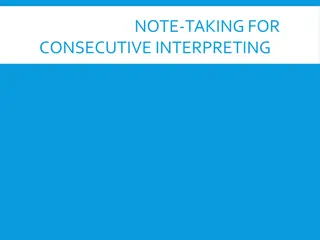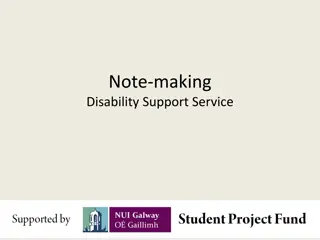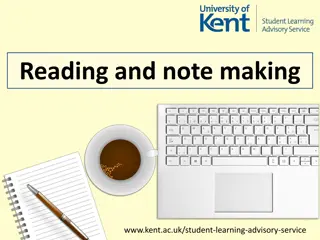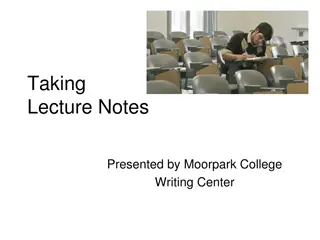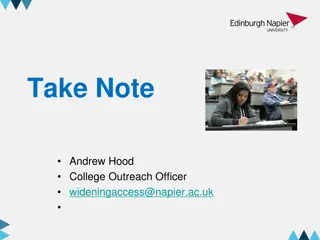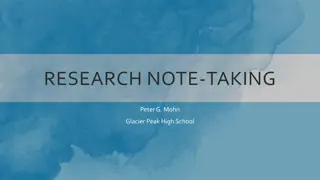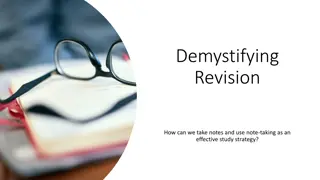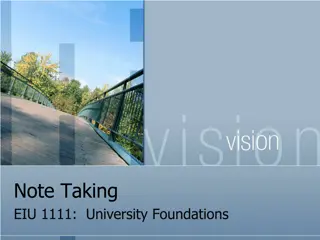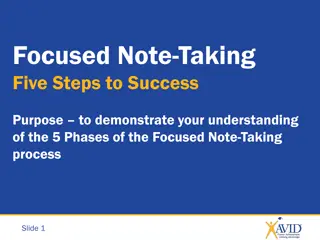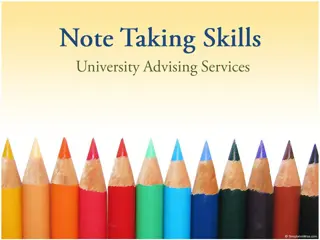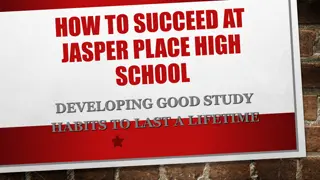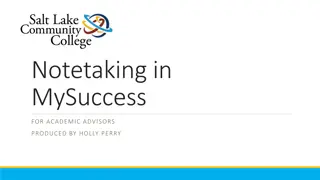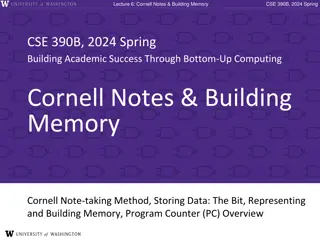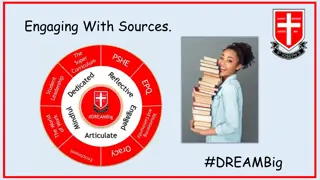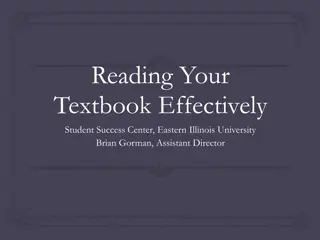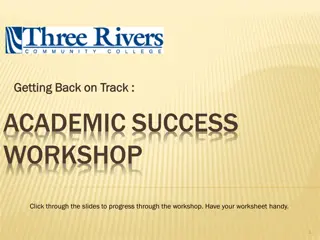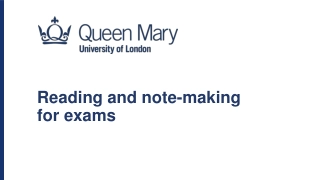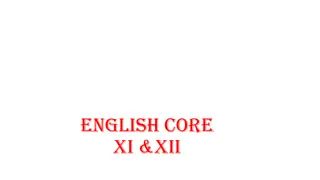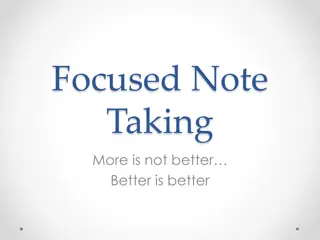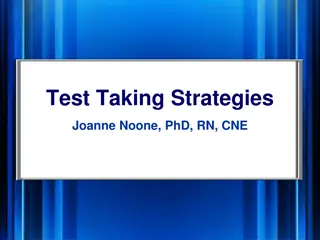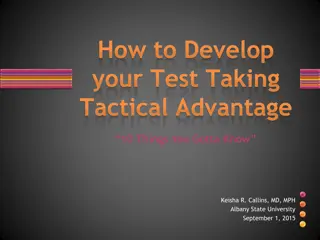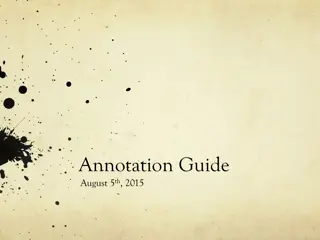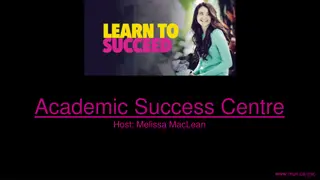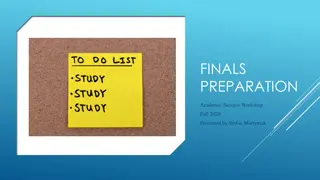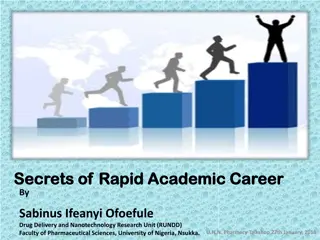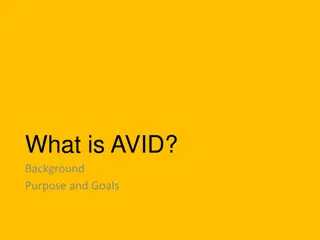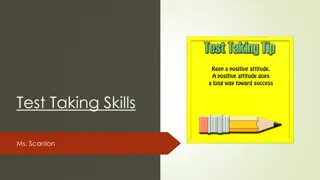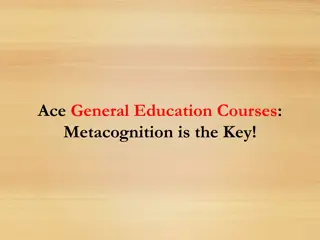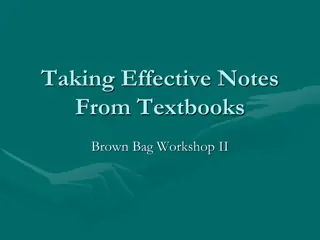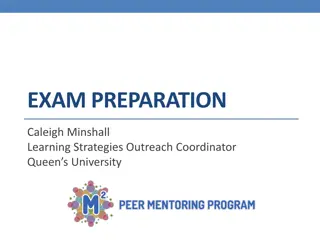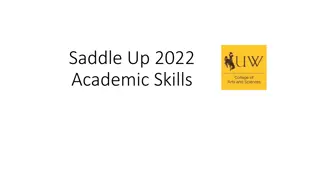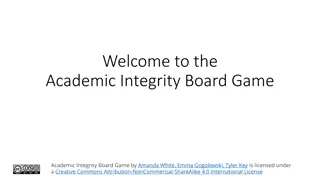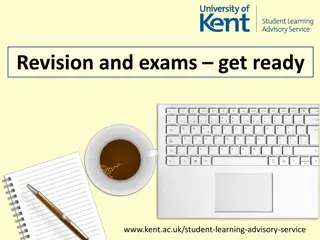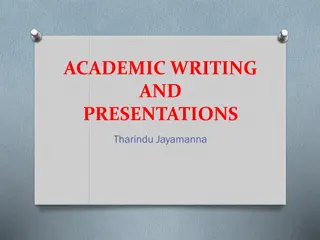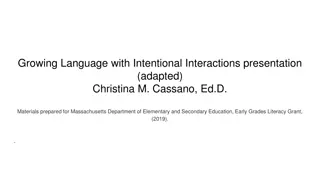Effective Note-Taking Strategies for Academic Success
Good note-taking skills are essential for academic achievement. This comprehensive guide covers the importance of note-making, reasons to take notes, effective strategies, and the benefits of electronic note-taking. Learn how to preview class content, stay focused, and develop a system that works best for you. Improve your learning experience and boost your retention and comprehension by mastering the art of taking notes.
Download Presentation

Please find below an Image/Link to download the presentation.
The content on the website is provided AS IS for your information and personal use only. It may not be sold, licensed, or shared on other websites without obtaining consent from the author. Download presentation by click this link. If you encounter any issues during the download, it is possible that the publisher has removed the file from their server.
E N D
Presentation Transcript
Note-Taking (or maybe better yet, Note-Making)
Taking Good Notes Is Crucial for Academic Success Educational research clearly shows that the completeness of lecture notes is positively related to academic achievement. Bonnie Armbruster, University of Illinois All activities associated with note-taking aid in learning: Listening Selecting Interpreting Discerning Writing Reviewing Studying
Why Take Notes? Creates a record for study and exam-prep materials Promotes active learning Boosts comprehension and retention Practices prioritizing and organizing information Increases alertness, focuses attention and extends attention span Enhances creativity So, go to class and take your own notes. There s no substitute!
How to Take Notes Note-taking involves listening to the teacher, selecting the important information, and writing it down. And, to some extent, discerning what s important from what s not is intuitive. Simple, right? Fundamentals: Preview before Class Focus in Class! Minimize Internal and External Distractions Implement a System But like most things associated with being a student, you can get better at taking notes with just a little attention to detail and a willingness to experiment, going beyond what comes natural to you to find what helps you learn best.
Take Notes Electronically? If you take notes on a laptop or iPad, be careful to avoid becoming a transcriber. You don t have to write down everything your instructor says. In fact, it s better not to. Think critically about what you include and omit, and take notes in your own words. When you engage in the cognitive process of distilling content and writing it in your own words, you are learning! Still want to use a laptop or your iPad? If so, there s an app for that: https://apps.apple.com/app/a pple-store/id778658393
Preview Class Content before Class Previewing makes it easier to: Check the Syllabus to See What Will Be Covered in the Upcoming Class Discern What s Important from What s Not As Important Know What to Record in Notes Look Back at Notes from Last Class Make Connections to Other Course Material Read/Look Over Textbook/Reading Materials that Correspond to Material to be Covered in Class Stay Focused during Lecture (We lose focus/concentration when we don t understand something. Previewing makes that less likely.)
Note-Making Systems Cornell Notes Outline Mapping Flow T-Notes (for Math)
Reserves Space in Your Notes for Note- Taking in Class and Summarizing/Review/Exam Prep after Class Cornell Method PROS Designates Space for: Cues Information Triggers Key Words Points You Need Clarified Possible Exam Questions Comments Cons None
Create a hierarchy of information, with main points in bold on the left hand side of the page and subpoints or examples below and to the right Outline Method PROS Highlights relationships between major points, supporting materials and examples Makes revision/review easy by presenting information in an order of importance Could be done electronically CONS Requires students to recognize hierarchy of information on the spot
A graphic instead of textual representation of the lecture Mapping Start with a central point and sketch related information around it PROS Great for visual learners Encourages Creativity Helps Make Connections to Related Info Easy to Edit/Revise and Add Features Like Color-Coding CONS Less Complete, Requiring More to Be Added after Class
Strive to make your notes a record of how you are processing what s happening in class, rather than a transcript of class. Flow Method Highlight the most important points Write down what you are thinking about the material; don t worry about how the material is being presented Create something original, not a facsimile of class Focus on your ideas as you learn the material, not the lecturer s The flow method is similar to mapping, except that you make a document reflecting how you are thinking about class content, including your own connections or examples.
T-Notes (for problem-based material) T-Notes can help you understand the process behind a concept, as well as, help you identify where you need clarification. Problem and/or Concept Work the Problem Explain each step Draw a T on your note paper Write down the problem or concept at the top In the left column, work the problem, showing each step In the right column, write down the steps for solving the problem, explaining why each step is necessary
In Class Be Prepared to Focus Bring the Materials You Need Sit Up Front Don t Show Up Tired, Distracted, Hungry or Thirsty If You Can Help It Leave Outside-of-Class Concerns at the Door Refocus When Your Mind Wanders Make Your Notes Review-Ready Date Your Notes Use Headings Write in Phrases Develop Your Own Shorthand Try to Identify Main Points, Supporting Details and Examples Note When the Instructor Emphasizes Concepts (i.e. Repetition, Pauses, Summary, Statements of Importance, etc.)
After Class Do something with your notes Complete Edit Revise Convert to study materials Speculate about what problems or exam questions your instructor could create based on this content Find answers to anything you have questions about or need clarification on; email or visit your instructor if necessary. IMPORTANT REVIEW YOUR NOTES to stay ahead of the Curve
Final Tips Go to class; the act of making notes contributes to the learning process Focus in class; work to eliminate internal and external distractions Write in your own words. Be interpretive; don t try to write everything down. You aren t a transcriber. Implement a system that works for you (even if it s your own Do something with your notes within 24 hours after class (edit/review/clarify/convert to study materials) Compare your notes to a classmate s


